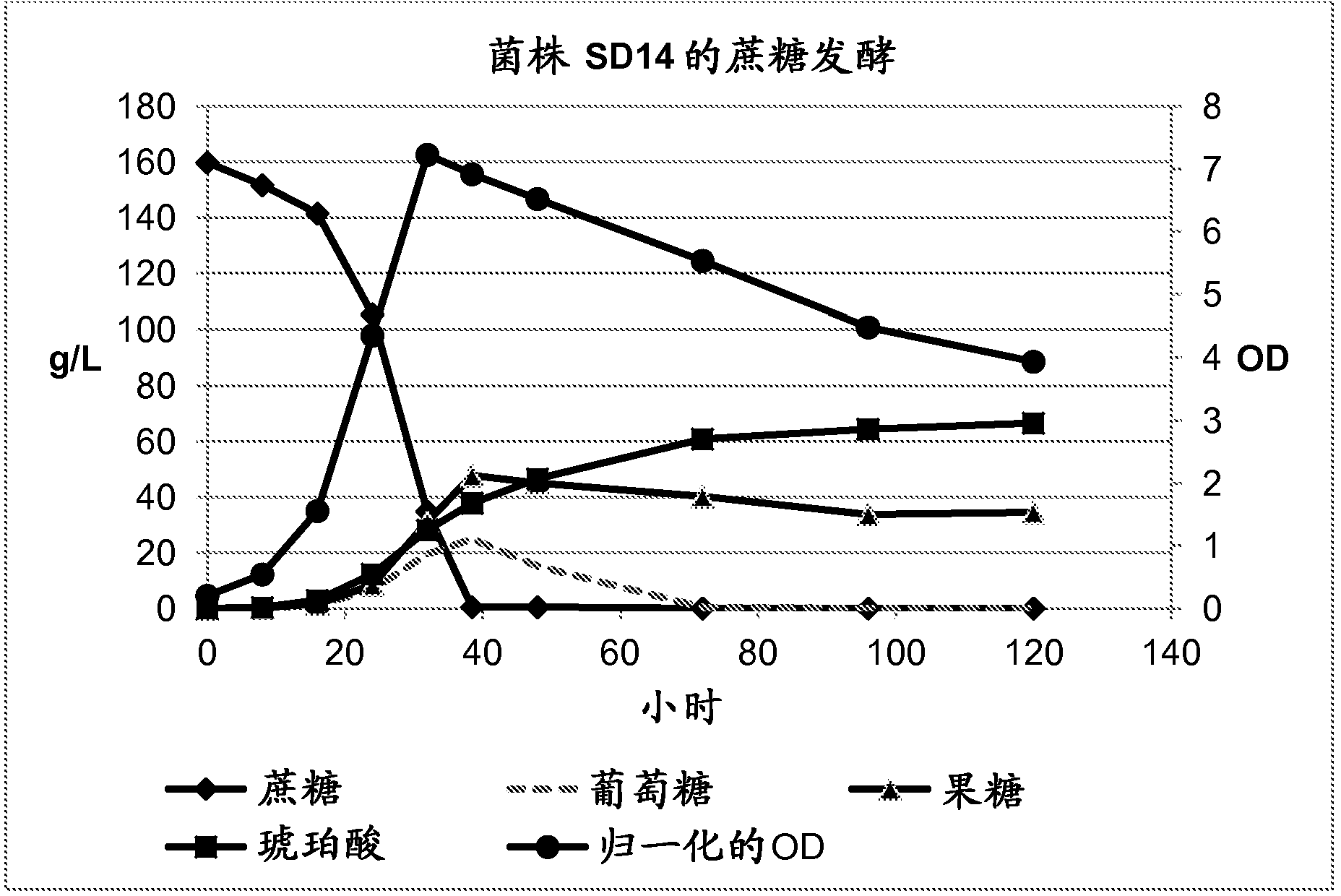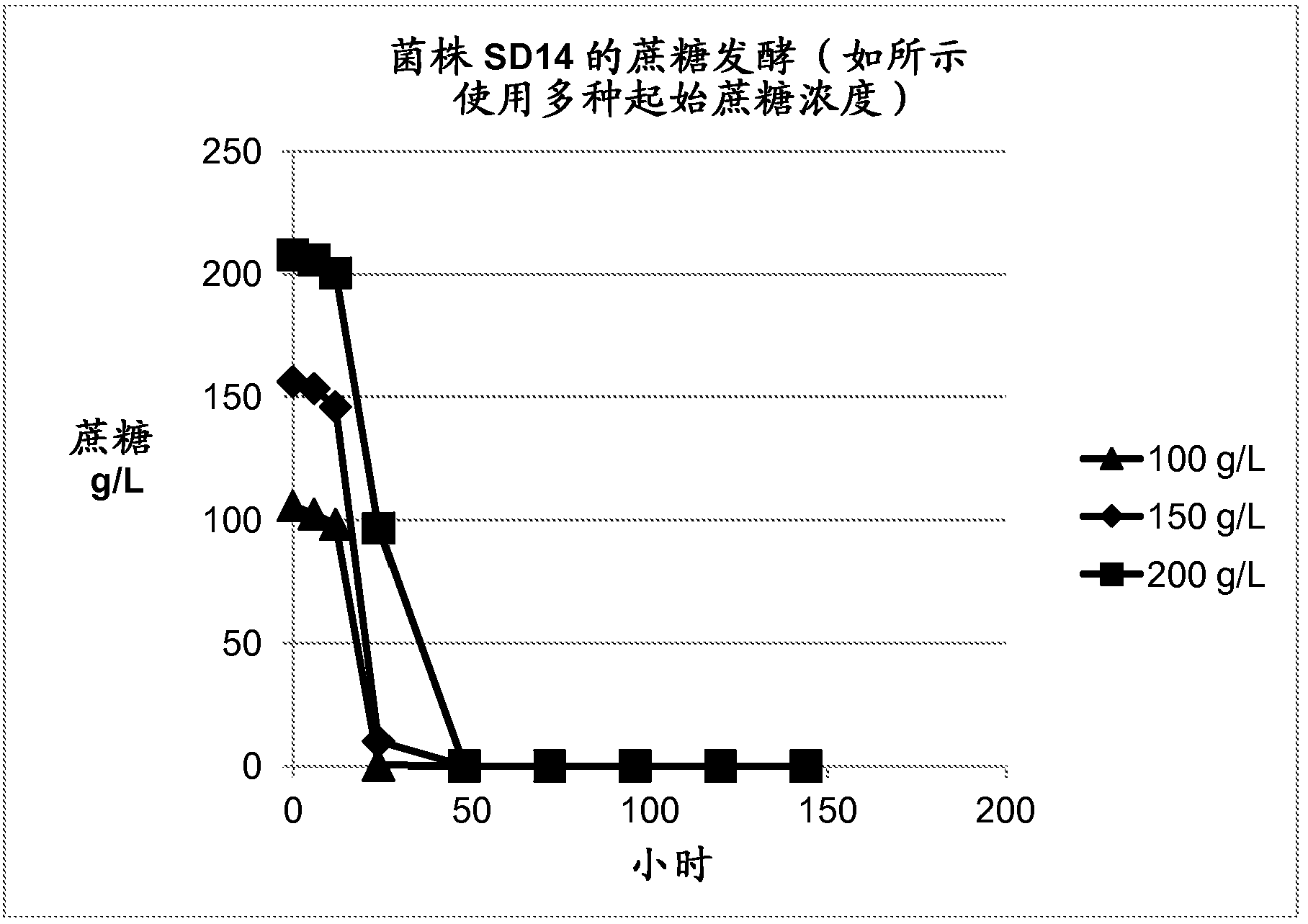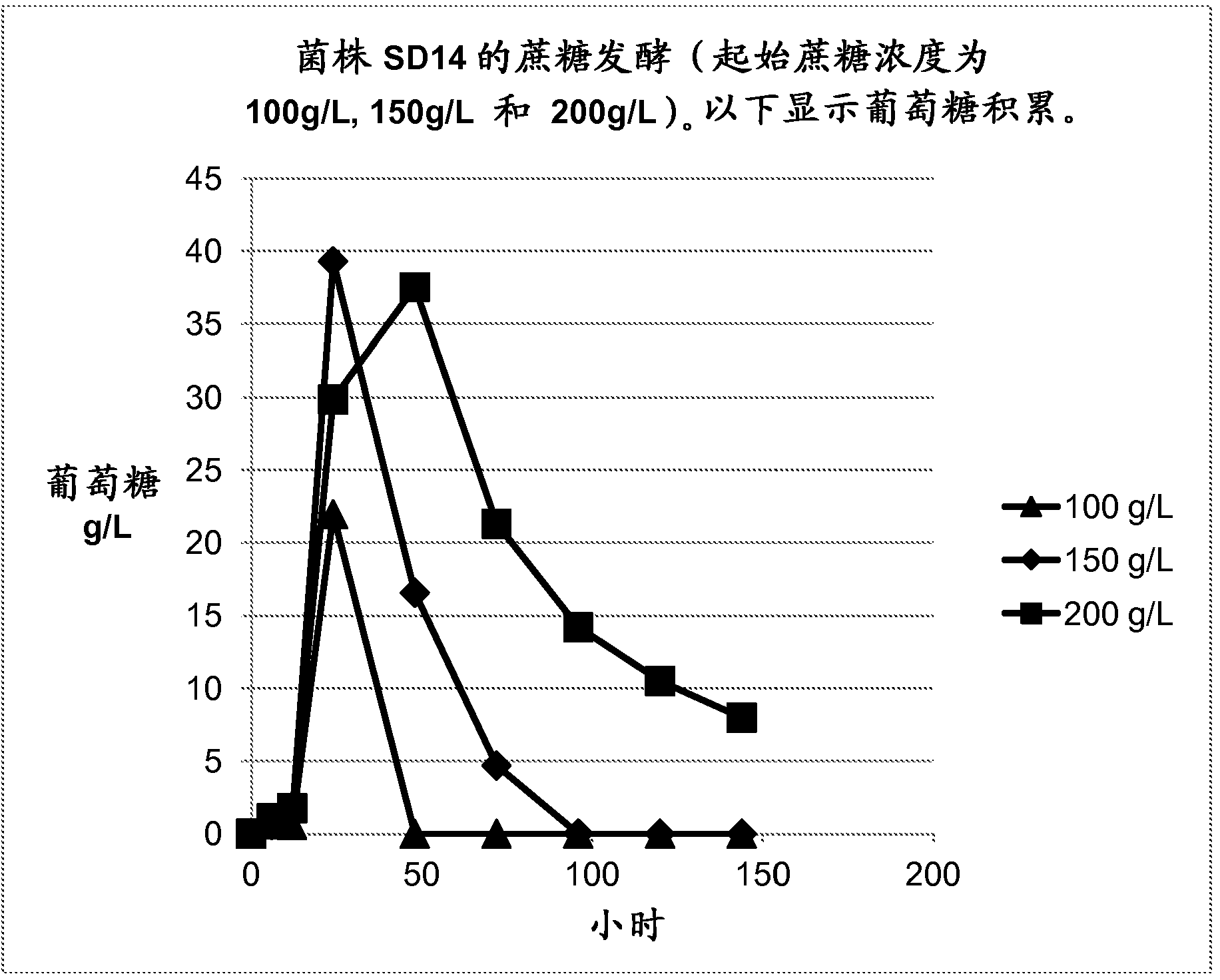Method of producing succinic acid and other chemicals using sucrose-containing feedstock
一种有机化学品、蔗糖磷酸化酶的技术,应用在遗传修饰领域,能够解决没有提及生产非氨基酸、不是最佳、未提及生产非氨基酸的化学品等问题,达到增强蔗糖运输和代谢的能力的效果
- Summary
- Abstract
- Description
- Claims
- Application Information
AI Technical Summary
Problems solved by technology
Method used
Image
Examples
Embodiment 1
[0095] Construction of SD14, a KJ122 derivative containing the cscBKA gene cluster from Escherichia coli W
[0096] A gene cluster encoding cscBKA for sucrose utilization uptake and utilization was amplified from genomic DNA of the W strain of Escherichia coli (ATCC 9637) using polymerase chain reaction. The PCR primers were designed so that the obtained PCR products contained only the cscB, cscK and cscA genes from the original csc operon in the W strain, but did not contain the functional cscR gene encoding the repressor protein. In addition to the sequence homologous to the csc operon, the primers used for PCR amplification included a 50 base (bp) sequence at the 5' end homologous to the site used for integration into the chromosome of E. coli KJ122 . The PCR primer sequences used in this example are listed in Table 1. The target site for integration was 291 bp upstream of the rrnC gene. This site does not encode any known genes, thus minimizing the possibility of disrup...
Embodiment 2
[0101] Growth and sucrose utilization analysis of the recombinant strain SD14 in a 7-liter fermenter
[0102] The SD14 strain was grown in basal medium supplemented with 10% sucrose. Ammonium hydroxide and ammonium bicarbonate (7N NH 4 OH and 3M NH 4 HCO 3 ) to neutralize the succinic acid produced in the fermentor at 39°C. The initial volume of 3 liters contained potassium dihydrogen phosphate (18 mM), magnesium sulfate (2 mM), betaine (1.33 mM), trace elements (Jantama et al., 2008a,b), antifoam 204 (8 ppm) and batch of 98g / l sucrose. The pH was initially adjusted to pH 7.0 and then maintained at pH 6.5 by addition of the above ammonium hydroxide / ammonium bicarbonate solution. Air was delivered at 5ml / min. A 150 ml inoculum was grown aerobically and contained basal medium with 2% sucrose supplemented with 0.1 mM calcium chloride.
[0103] For comparison, KJ122 was fermented in the same medium with the same neutralizing solution, except that the carbon source was gluco...
Embodiment 3
[0106] Cloning and expression of sucrose phosphorylase in SD14
[0107] The sucrose phosphorylase gene from Leuconostoc enteritidis strain DSM 20193 (Goedl et al., 2007) was cloned by PCR amplification using primers BY107 and BY108 (see Table 1) and genomic DNA as template. The obtained 1594 bp PCR product was purified on a Quiagen QIAquick PCR purification column, cut with Xbal and BamHI restriction enzymes (New England Biolabs), and purified by agarose gel electrophoresis. The obtained fragment was ligated into the Xbal to BamHI backbone of pOM324 (US Patent Application 2009 / 0311756) to generate plasmid pRY801, which places the sucrose phosphorylase gene under the control of a strong constitutive promoter. The promoter-sucrose phosphorylase gene-terminator cassette was excised from pRY801 by cutting with XhoI and BamHI, and the sticky ends of the resulting cassette were filled in with the Quick Blunting Kit (New England Biolabs), and the blunt-ended fragments were ligated int...
PUM
 Login to View More
Login to View More Abstract
Description
Claims
Application Information
 Login to View More
Login to View More - R&D
- Intellectual Property
- Life Sciences
- Materials
- Tech Scout
- Unparalleled Data Quality
- Higher Quality Content
- 60% Fewer Hallucinations
Browse by: Latest US Patents, China's latest patents, Technical Efficacy Thesaurus, Application Domain, Technology Topic, Popular Technical Reports.
© 2025 PatSnap. All rights reserved.Legal|Privacy policy|Modern Slavery Act Transparency Statement|Sitemap|About US| Contact US: help@patsnap.com



